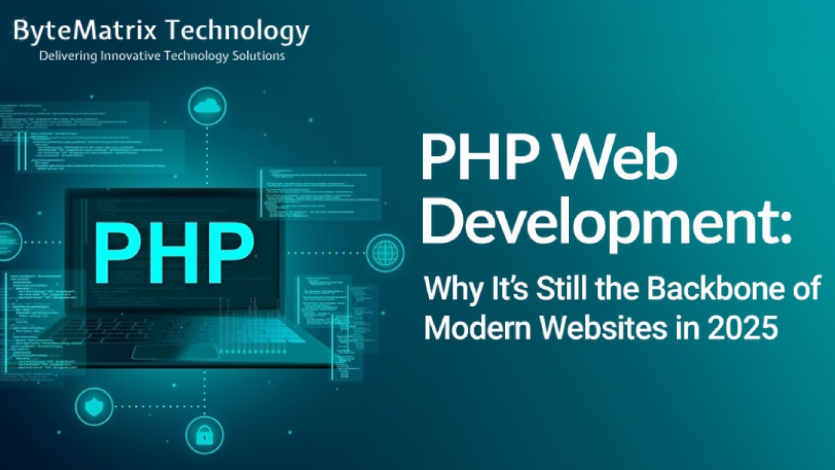
PHP has been around for decades, powering some of the world's most popular websites, from Facebook's early days to platforms like WordPress. Even in 2025, PHP remains one of the most widely used server-side programming languages for web development. What has changed, however, is the way developers use it—focusing more on scalability, performance, and security than ever before.
If you're looking to master PHP in 2025, here's what you need to know about building web applications that are both powerful and future-ready.
Why PHP Still Matters in 2025?
Some predicted PHP would fade away, but the opposite has happened. With continuous updates, strong community support, and frameworks like Laravel, Symfony, and CodeIgniter, PHP has evolved into a robust language for modern applications.
Businesses choose PHP because it offers:
Building Scalable Applications with PHP
Use Modern Frameworks
Frameworks like Laravel and Symfony are not just about speeding up development—they enforce best practices. They provide built-in tools for routing, caching, database management, and API integrations, making applications more scalable from the ground up.
Adopt Microservices Architecture
Monolithic applications can become difficult to manage as they grow. By using PHP in a microservices architecture, developers can break down large applications into smaller, independent services. This makes scaling easier and reduces the risk of bottlenecks.
Optimize Database Performance
Database queries are often the slowest part of an application. Developers can use tools like Doctrine ORM or Laravel's Eloquent with caching systems such as Redis or Memcached to reduce load times and improve performance.
Leverage Cloud-Native Solutions
Cloud platforms like AWS, Google Cloud, and Azure now offer specialized services for PHP applications. Features like auto-scaling, load balancing, and containerization with Docker/Kubernetes ensure that apps can handle high traffic without downtime.
Securing PHP Applications in 2025
With cyber threats becoming more sophisticated, security is no longer optional—it's essential. Here are key practices to ensure secure PHP applications:
Keep PHP and Dependencies Updated
Always use the latest stable version of PHP. New releases include performance improvements and security patches that protect against vulnerabilities.
Implement Strong Authentication
Modern PHP applications should use multi-factor authentication (MFA), OAuth 2.0, or JWT tokens to secure logins and APIs. Passwords must be hashed using bcrypt or argon2.
Prevent Common Vulnerabilities
Frameworks like Laravel provide built-in protections for many of these vulnerabilities.
Secure Data Transmission
Enforce HTTPS with SSL/TLS certificates to encrypt communication. For sensitive data like payments, integrate with PCI-compliant services rather than handling it directly.
Monitor and Audit
Tools like Snyk or SonarQube can scan PHP code for vulnerabilities. Regular audits ensure that potential security risks are caught before they become major problems.
The Role of AI and Automation in PHP Development
By 2025, AI-powered tools are assisting PHP developers with code suggestions, bug detection, and automated testing. Continuous Integration/Continuous Deployment (CI/CD) pipelines are also standard, allowing for faster and safer updates.
For example, tools like GitHub Copilot can accelerate coding, while Jenkins or GitHub Actions automate testing and deployment. These advancements mean developers can focus more on innovation and less on repetitive tasks.
Best Practices for Mastering PHP in 2025
Conclusion
PHP in 2025 is not the same PHP of the early 2000s. It has matured into a language that supports modern architectures, enterprise-grade scalability, and advanced security practices.
To master PHP today, developers must go beyond just writing code. They need to think strategically—leveraging frameworks, cloud platforms, security best practices, and automation tools.



